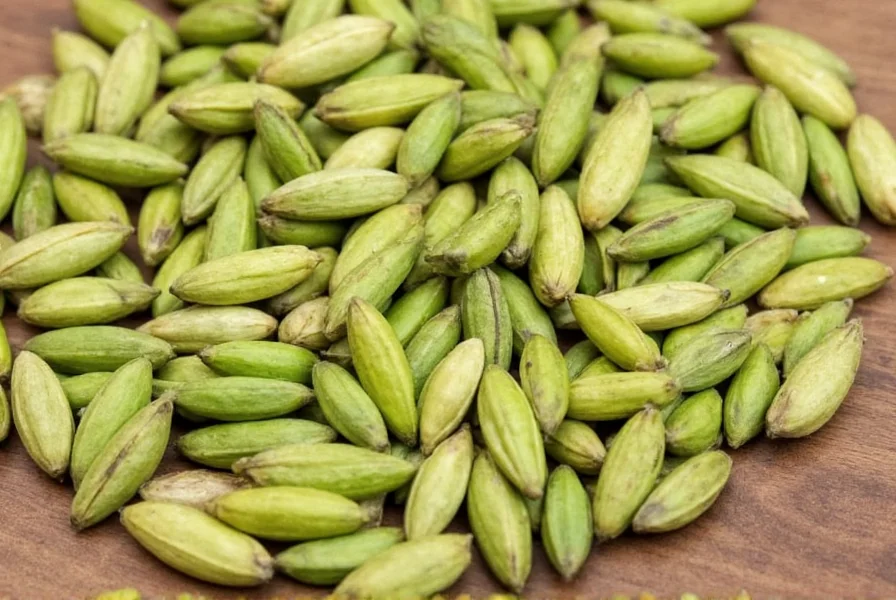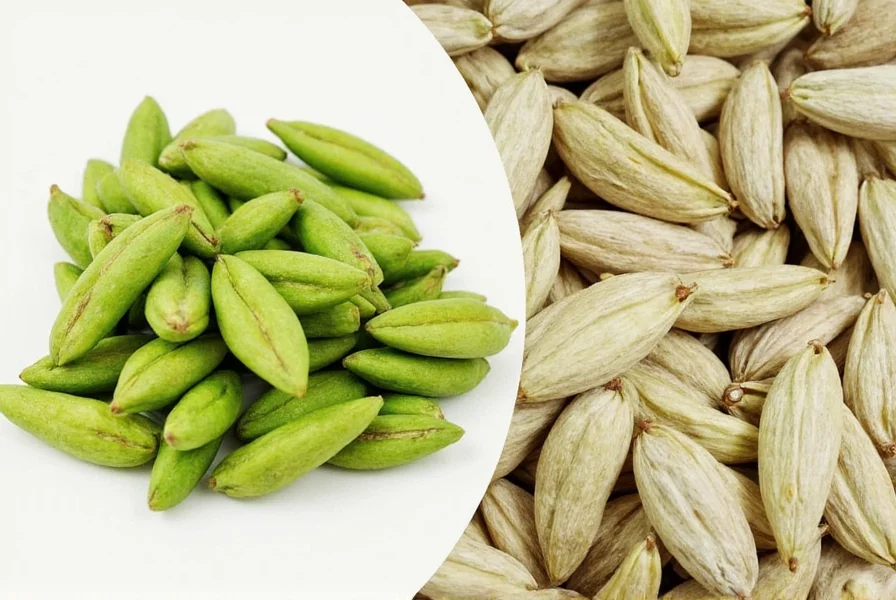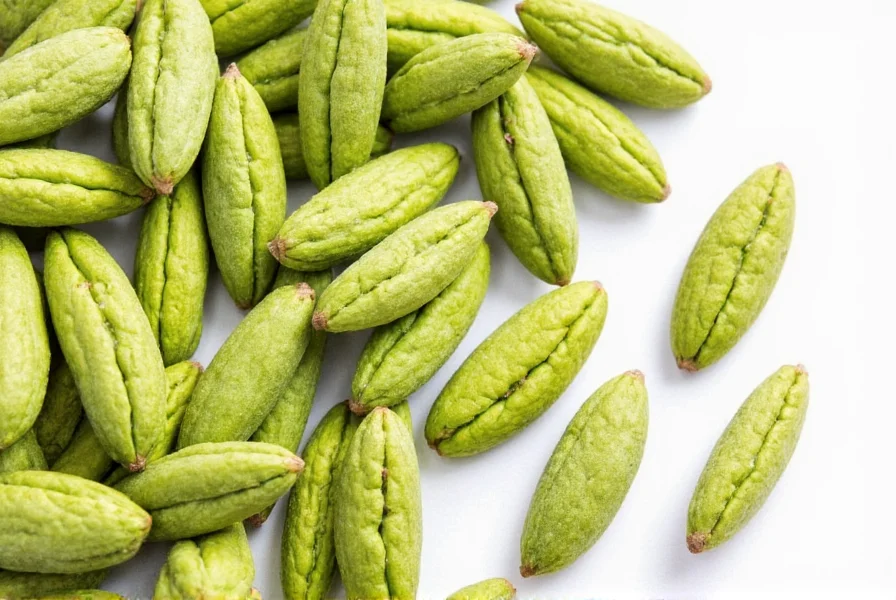Table of Contents
What Are Cardamom Pods?
Cardamom pods are aromatic spice pods from the ginger family, prized for their complex flavor and versatility in both sweet and savory dishes. These small, green or brown pods contain tiny seeds that release intense citrusy, floral, and slightly spicy notes when crushed. Unlike ground cardamom, whole pods preserve freshness longer and allow controlled flavor infusion.

Originating in India and Sri Lanka, cardamom has been used for over 4,000 years in Ayurvedic medicine, perfumery, and cooking. Today, it's a staple in global cuisines from Indian biryanis to Scandinavian baked goods. The pods' unique ability to enhance both sweet and savory dishes makes them indispensable for home cooks and professional chefs alike.
Flavor Profile & Forms
Cardamom's flavor varies significantly by form and type. Understanding these differences ensures proper usage in recipes:
| Form | Flavor Intensity | Best Applications |
|---|---|---|
| Whole green pods | Mild, nuanced | Infusing liquids (chai, coffee, rice dishes) |
| Crushed green pods | Moderate, balanced | Baking, curries, stews |
| Ground green cardamom | Strong, immediate | Quick recipes like spice blends or frostings |
| Whole black pods | Smoky, intense | Meat dishes, biryanis, Indian spice mixes |

Real-world example: In traditional Indian masala chai, whole green cardamom pods are simmered with tea leaves for 5-7 minutes to release subtle citrus notes without overpowering the black tea. Ground cardamom would create a harsh, medicinal taste in this application.
10+ Practical Uses in Cooking
- Chai Tea: Add 2-3 crushed green pods to black tea while brewing for authentic Indian flavor
- Coffee Enhancement: Toast 1 pod and grind with coffee beans for a floral twist
- Bakery: Mix 1/4 tsp ground cardamom into cookie dough or cake batter for complexity
- Rice Dishes: Simmer 2 whole pods in basmati rice with cinnamon for fragrant biryani
- Dessert Sauces: Infuse cream with 1 pod for crème brûlée or ice cream
- Meat Rubs: Combine ground cardamom with cumin and coriander for lamb or chicken
- Smoothies: Add 1/2 tsp ground cardamom to fruit smoothies for depth
- Hot Chocolate: Simmer whole pods with milk before adding chocolate
- Spiced Nuts: Toss roasted almonds with melted butter, cardamom, and honey
- Vegetable Roasting: Sprinkle ground cardamom over roasted carrots or sweet potatoes
- Salad Dressings: Whisk 1/4 tsp ground cardamom into vinaigrettes for Middle Eastern flair
Pro tip: Always toast whole pods in a dry pan for 30 seconds before crushing to unlock maximum aroma. Never use pre-ground cardamom for infusion-based recipes—it loses flavor rapidly after grinding.
How to Choose Quality Cardamom Pods
Quality varies significantly between products. Follow these expert guidelines:
- Appearance: Green pods should be vibrant, plump, and slightly glossy. Black pods should be deep brown with intact husks. Avoid pods with cracks or dull color
- Smell Test: Crush 1 pod between fingers—fresh pods release a strong, sweet, citrusy aroma. Stale pods smell flat or musty
- Texture Check: Pods should feel firm and dry. Sticky or damp pods indicate moisture exposure and spoilage
- Source Matters: Indian or Sri Lankan green cardamom is generally superior for culinary use. Guatemalan cardamom has a milder flavor profile
- Packaging: Buy in airtight containers with roast dates. Avoid bulk bins where pods lose freshness quickly
Common mistake: Many consumers buy ground cardamom for convenience, but it loses 50% of its flavor within 2 weeks. Whole pods stay fresh for 1-2 years when stored properly.

Expert Usage Tips
- Storage: Keep in opaque, airtight containers away from light. Freezing preserves freshness for up to 2 years
- Crushing Technique: Use a mortar and pestle—never a spice grinder. Grinders generate heat that destroys delicate aromatics
- Pairing Guide: Best with cinnamon, cloves, vanilla, citrus, and chocolate. Avoid pairing with strong spices like cayenne
- Measurement: 1 whole pod = 1/4 tsp ground. Start with less—cardamom's flavor intensifies with cooking
- Infusion Method: For teas and liquids, add pods early in cooking and remove before serving to prevent bitterness
Professional chef secret: When making Indian kheer (rice pudding), simmer 5 whole pods in milk for 15 minutes, then remove before adding rice. This creates perfect flavor distribution without overpowering the dish.
Frequently Asked Questions
How long do cardamom pods last?
Whole green cardamom pods maintain peak freshness for 1-2 years when stored in airtight containers away from light. Black cardamom lasts slightly longer (up to 2.5 years). Ground cardamom loses potency within 6 months.
Can I substitute ground cardamom for whole pods?
Yes, but with adjustments: 1 whole pod = 1/4 tsp ground cardamom. Whole pods provide gradual flavor infusion, while ground cardamom releases immediate intensity. Never substitute ground for infusion-based recipes like chai—use whole pods instead.
What's the difference between green and black cardamom?
Green cardamom (Elettaria) has bright, citrusy notes ideal for sweets and beverages. Black cardamom (Amomum) has smoky, camphor-like flavor used in savory dishes like Indian curries. They're not interchangeable—green for most recipes, black only for specific meat or spice blends.
How can I tell if my cardamom pods are fresh?
Crush a pod: Fresh pods release a strong, sweet, floral aroma with citrus undertones. Stale pods smell flat, musty, or lack scent. Visually, green pods should be vibrant and plump, not shriveled or discolored.
Is cardamom healthy?
Research suggests cardamom may support digestion and reduce inflammation due to antioxidants like cineole. However, it's not a medical treatment—consult healthcare professionals for health concerns. Traditional Ayurvedic use focuses on digestive benefits, but clinical evidence remains limited.
How much cardamom should I use?
Start conservatively: 1-2 pods per 4 servings for savory dishes, 1/4 tsp ground for baking. Cardamom's flavor intensifies during cooking—always add less than you think needed and adjust after tasting.
Can I grow cardamom at home?
Cardamom requires tropical conditions (80-90% humidity, 70-85°F temps, partial shade). It's nearly impossible to grow outside equatorial regions. Most home growers fail due to insufficient humidity and temperature control.










 浙公网安备
33010002000092号
浙公网安备
33010002000092号 浙B2-20120091-4
浙B2-20120091-4